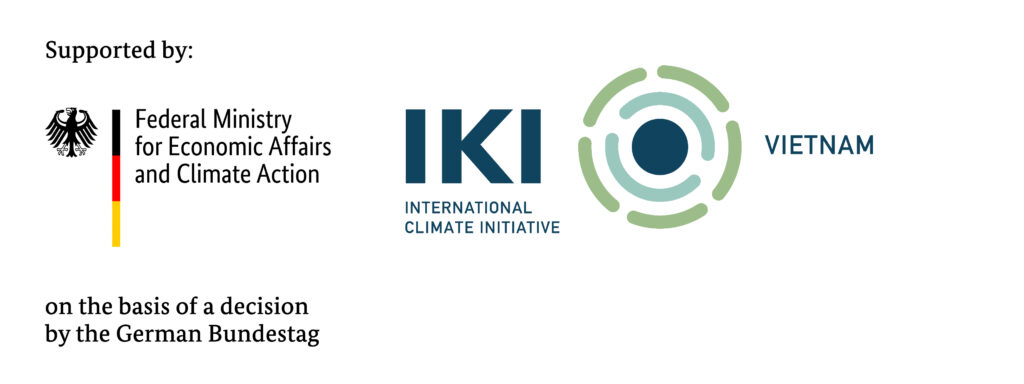With more than 3,200 km of coastline, Viet Nam is highly vulnerable to the impacts of climate change, especially typhoons. Tropical storms like the series of five typhoons that made landfall in the North Central Coast of Vietnam (NCC) in the fall of 2020 have significant negative impacts on human well-being and the economy, especially poor local communities living in rural areas.
Intact and highly biodiverse coastal forests have essential protective functions and mitigate the effects of tropical storms. The IKI-project “Ecosystem-based Adaptation in the North Central Coast of Vietnam: Restoration and Co-management of Degraded Dunes and Mangroves1” is the first significant effort to restore degraded coastal protection forests on dunes and sandy areas. The project is jointly implemented by unique land use GmbH (Germany) and the Institute of Resources and Environment (IREN) of Hue University since 2018. The team has successfully developed and piloted an innovative planting approach using exclusively native tree species and mimicking the naturally occurring species composition and growth patterns as found in natural forest remnants in the three project provinces (Thua Thien Hue, Quang Tri, and Quang Binh). The primary beneficiaries are the local partner communities.
The project team has identified more than twenty site-adapted tree species, raised them in four nurseries, and planted more than 580,000 seedlings on 450 ha on sandy coastal areas owned by our partner communities. Despite extremely poor soils, drought and even fire, initial monitoring efforts in spring 2020 revealed excellent survival rates of 80% and above. The planting on these pilot sites had just been concluded, when in October 2020 a series of five consecutive typhoons struck the project sites in NCC. All sites were heavily affected by the long flood and related sand movement. Thanks to the resprouting ability of the selected site-adapted native species, however, the sites recovered to a certain extent: subsequent monitoring efforts (October 2021) show tree seedling survival rates between 30 and 50%, depending on the level of storm impact and inundation.
The storm series revealed the need to proactively restore degraded coastal forests against the impacts of climate change. It also demonstrated the suitability and superiority of site-adapted native tree species over exotic species as Acacia and Casurina on comparable sites – particularly due to the resprouting ability of native species. Notwithstanding, extra efforts are required to replant the sites to fully achieve the project goals, and to promote the upscaling of this viable nature-based solution for the ecosystem-based adaptation of coastal forests in Viet Nam. In this context, the project team of unique and IREN appreciate the approval of a request to BMUV and ZUG for a two-year project extension until October 2024, and sufficient additional funding to produce the seedlings for replanting in a newly established best-practice nursery for native tree species in Hue.

